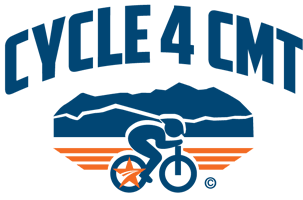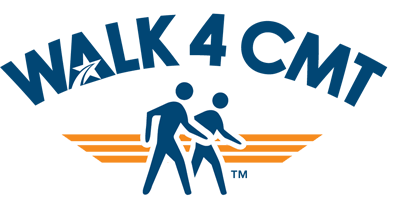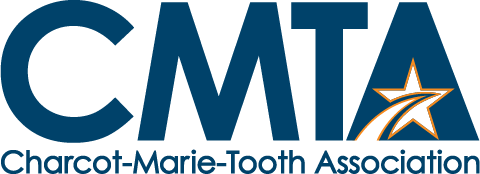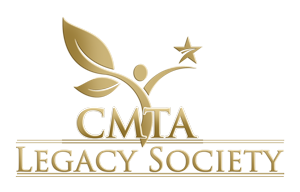Does CMT cause Breathing Problems?
Yes, CMT can cause breathing problems for some. For reasons not understood, not all individuals who have CMT will develop breathing problems. When breathing is affected in CMT, it’s a very specific kind of respiratory impairment called CMT-induced neuromuscular respiratory muscle weakness. Unlike more common types of respiratory impairment that affect the lungs and/or airway, the type of respiratory impairment CMT can cause does not affect the lungs or the airways. Instead, the type of respiratory impairment CMT can cause is from the muscles used for breathing becoming weakened.
What is Respiratory Impairment?
Respiratory impairment is a very broad term that refers to difficulty with breathing. Anything that causes respiratory impairment is considered respiratory disease. Respiratory disease can be acute—short-term, or chronic—long-term/lifelong. All respiratory disease, whether acute or chronic, causes shortness-of-breath (SoB).
Respiratory viruses and respiratory bacterial infections, such as the flu (influenza virus) and bacterial pneumonia (pneumococcus bacteria), are examples of acute respiratory disease. Emphysema and idiopathic pulmonary fibrosis are examples of chronic respiratory disease.
Respiratory disease is grouped into two basic categories: diseases of lung/airway tissue, and thoracic cavity respiratory disease. Diseases of lung/airway tissue are diseases that affect the tissues of the lungs and airways, and these are divided into two subgroups: obstructive lung disease and restrictive lung disease.
What is Obstructive Lung Disease?
Obstructive lung disease is a group of lung and airway diseases that impair breathing by obstructing airflow out of the lungs and airways when breathing out. Individuals who have an obstructive lung disease cannot fully empty their lungs when breathing out. This causes hyperinflation (lungs stay somewhat inflated). Examples of obstructive lung disease include Emphysema, Chronic Bronchitis, and Bronchiectasis.
What is Restrictive Lung Disease?
Restrictive lung disease is a group of lung and airway diseases that impair breathing by restricting airflow into the lungs when breathing in. Individuals who have a restrictive lung disease cannot fully fill their lungs with each breath. This is called hypoinflation (lungs under-inflate). Restrictive lung disease often results in a reduction of lung distensibility, or what is a reduction in the ability of lung tissue to expand—a loss of lung elasticity (the lungs lose their ability to stretch). As a consequence, total overall lung capacity can become reduced. Examples of restrictive lung disease include Sarcoidosis and Idiopathic Pulmonary Fibrosis.
What is Thoracic Cavity Respiratory Disease?
Thoracic cavity respiratory disease is any respiratory impairment that reduces the ability to fully expand the chest cavity with each breath. A distinction between this kind of respiratory impairment and the others is that lung and airway tissues remain healthy. Airflow into the lungs is not restricted and airflow out of the lungs is not obstructed.
In respiratory diseases of the thoracic cavity, the limitations to the chest cavity expanding fully with each breath cause a reduction in how much the lungs can inflate with each breath, and this leads to hypoinflation. The type of respiratory impairment CMT can cause is an example of thoracic cavity respiratory disease.
What is CMT-Induced Neuromuscular Respiratory Muscle Weakness?
CMT-induced neuromuscular respiratory muscle weakness is a type of respiratory impairment caused by the muscles used for breathing becoming weakened because of CMT. In neuromuscular diseases that can affect breathing, such as CMT, the breathing muscles become weakened by the disease and the result is a reduction in the ability to fully expand the chest cavity with each breath. Consequently, there’s a reduction in the ability to fully inflate the lungs with each breath. However, the lungs and airways are left unharmed.
How does CMT Cause Breathing Problems?
CMT can cause breathing problems by affecting the nerves that control the muscles used for breathing. Just as CMT can cause the muscles of the lower legs, feet, and hands to become weakened, for example, so too can CMT cause the muscles used for breathing to become weakened.
When talking about CMT-related respiratory muscle weakness, we frequently talk about the diaphragm and what’s called the phrenic (freh-nick or free-nick) nerve. The phrenic nerve is the nerve that controls diaphragm movement. When this nerve is affected by CMT, the diaphragm can become weakened. The diaphragm and its nerve are not the only muscle (and nerve) used for breathing, and therefore, the diaphragm is not the only breathing muscle that can become weakened in CMT.
Which Muscles are Used for Breathing?
The diaphragm is the most important breathing muscle. Breathing starts with the diaphragm moving downward towards the abdomen. This creates space within the chest cavity for the lungs to expand as they inflate with air. While this is a very important muscle movement for breathing, it’s not the only one.
As the diaphragm moves downward, the external intercostal muscles of the rib cage expand the chest cavity outward. The chest cavity must expand outward so the lungs can fully inflate with each breath. Because the diaphragm moving downward, on its own, does not create enough space within the chest cavity for the lungs to fully inflate with each breath, the chest expanding outward is a critical part of breathing. The diaphragm and the external intercostal muscles get help from several muscles known as the respiratory accessory muscles.
What are Respiratory Accessory Muscles?
The respiratory accessory muscles are a group of muscles that help the diaphragm and the external intercostal muscles to expand the chest cavity or to make the chest cavity smaller with each breath. This group of muscles consists of the remaining muscles of the chest and rib cage, the muscles of the neck, the trapezius muscle between the shoulder blades, and the abdominal muscles.
Some respiratory accessory muscles are used for expanding the chest cavity outwards when breathing in, some are used for making the chest cavity smaller when breathing out, and some are used for both.
Which Muscles are Used for Breathing In?
The muscles used for breathing in are the diaphragm and any muscle that expands the chest cavity outwards and upwards with each breath. These muscles are the muscles of the neck, the trapezius muscle between the shoulder blades, and the pecs. Collectively, these muscles are the inspiratory accessory muscles (inspiratory = breathing in). Without these muscles performing their critical inspiratory role, there wouldn’t be enough room in the chest cavity for the lungs to adequately inflate with each breath.
Which Muscles are Used for Breathing Out?
Breathing out means reducing the size of the chest cavity. To do this, the diaphragm moves upwards, the rib cage moves inward (contracts), and the top of the rib cage moves downward. The muscles that make this happen are the muscles of the rib cage. Together with the abdominal muscles that assist the diaphragm, these are the expiratory accessory muscles (expiratory = breathing out).
Which Nerves Control the Muscles Used for Breathing?
There are many different nerves that control the muscles used for breathing, and each nerve is quite complex. The phrenic nerve gets the most attention because it controls the diaphragm, and the diaphragm is the most important muscle used for breathing. However, each of the muscles used for breathing are controlled by other various nerves.
The various nerves that control (innervate) the muscles used for breathing are the intercostal nerves (IC), and specifically IC2 and IC3-IC11, the cervical spinal nerves C3-C8, and the accessory nerve (Cranial Nerve XI). Additionally, the right superior laryngeal and left superior laryngeal nerves control the muscles of the larynx (the voice box). These muscles can also become weakened in CMT. When they do, the size of the upper airway can become reduced. Because CMT can affect each of these nerves, the muscles controlled by these nerves can become weakened.
What are the Symptoms of CMT-Related Breathing Problems?
The symptoms of CMT-related breathing problems are caused by the muscles used for breathing becoming weakened. CMT is a neuromuscular disease that can cause respiratory muscle weakness for some. Because of this, the symptoms associated with CMT-related respiratory impairment are the same as they are for other neuromuscular diseases that can affect breathing.
Symptoms of CMT-related breathing problems include but are not limited to:
- Shortness-of-Breath (SoB) (Dyspnea)
- Shallow Breathing
- Increased SoB when Lying Flat (Orthopnea)
- Increased SoB with Physical Exertion
- Weak Cough
- Obstructive Sleep Apnea
- Central Sleep Apnea
- Nocturnal Hypopnea
- Elevated Carbon Dioxide Levels
Often, the first signs of breathing problems in CMT are a gradual increase in difficulty getting a full breath leading to SoB (dyspnea [disp-nee-uh]), breathing which becomes shallow, difficulty breathing when lying flat on your back (orthopnea [or-thop-nee-uh]), quickly becoming out of breath with physical exertion, and a weak cough.
Sleep disordered breathing can often develop. Sleep disordered breathing is a disruption in normal breathing when sleeping. Examples of sleep disordered breathing are Obstructive Sleep Apnea, Central Sleep Apnea, and Nocturnal Hypopnea.
What is Obstructive Sleep Apnea?
Research suggests CMT likely predisposes to obstructive sleep apnea (OSA). OSA is a condition in which the muscles of the throat (the upper airway) become weakened and collapse when sleeping, closing off the airway. This results in breathing momentarily stopping (apnea—ap-nee-uh).
The muscles of the throat (the upper airway) can become weakened in CMT, with or without respiratory muscle weakness. Hence, OSA is fairly common in CMT. OSA can also be an early sign of respiratory muscle weakness in CMT. However, an individual who has CMT can have OSA without developing CMT-related breathing problems.
What is Central Sleep Apnea?
Central Sleep Apnea (CSA) is a condition in which there’s a brief interruption in the signals from the brain to breathe. This results in breathing momentarily stopping. The difference between OSA and CSA is that CSA is not caused by an airway obstruction that causes a pause in breathing. Instead, CSA is a pause in breathing caused by a momentary interruption in the nerve signal that controls the muscles used for breathing.
An individual who has CMT can have both OSA and CSA. If the apnea events are frequent enough and/or last long enough, whether from OSA or CSA, or from both, the individual can experience a drop in oxygen levels.
What is Nocturnal Hypopnea?
Nocturnal hypopnea is a condition in which there is a period of shallow breathing lasting at least ten seconds while asleep. Hypopnea causes hypoinflation which can lead to oxygen levels dropping and carbon dioxide levels rising. Hypopnea can become especially troublesome during REM sleep for somebody who has CMT-related breathing problems.
During REM sleep, the only active breathing muscles are the diaphragm and the parasternal intercostal muscle (located in the upper rib cage). When these muscles are weakened and not receiving any assistance from the accessory muscles, they can have a tough time keeping up, leading to rapid shallow breathing (hypopnea). This resulting hypopnea during REM sleep in an individual who has CMT-related breathing problems is caused by these weakened breathing muscles not having the strength to handle respiratory demand on their own.
What is Dyspnea on Exertion?
Dyspnea (disp-nee-uh) on exertion is shortness-of-breathe when doing anything physically demanding such as vigorous exercise and is a feeling of not being able to breathe in enough air. Individuals who have CMT-related breathing problems may experience dyspnea on exertion because the muscles used for breathing can’t expand the chest cavity enough for the lungs to get a full breath. And this worsens with exertion because there’s a reduction in the ability to increase tidal volume.
Tidal volume is the amount of air needed with each breath to keep the body properly oxygenated. During periods of exertion, the body needs more oxygen, and this means tidal volume must increase. However, individuals who have CMT-related breathing problems can have a harder time increasing their tidal volume when needed because the weakened breathing muscles might not expand the chest cavity enough to allow for the needed extra air.
Can CMT-Related Breathing Problems Cause Elevated Carbon Dioxide Levels?
The most important concern with CMT-related breathing problems is the potential for carbon dioxide levels to rise to unhealthy levels. To blow out enough carbon dioxide from the lungs, the lungs must first fill with enough air. CMT-related respiratory muscle weakness causes a reduction in the ability to fully inflate the lungs with each breath—the lungs don’t inflate enough. This can lead to a reduction in the ability to blow out enough carbon dioxide to maintain healthy levels in the body.
To blow out enough carbon dioxide, the lungs have to inflate with enough air. The lungs can only blow out an amount of air equal to the amount of air that is inhaled. If the lungs are not able to inflate with the amount of air needed to then blow out enough carbon dioxide, carbon dioxide levels can rise and lead to hypercapnia (high-per-cap-nee-uh). Symptoms of hypercapnia include but are not limited to headaches, confusion, an inability to stay awake, and a worsening of respiratory symptoms. Managing carbon dioxide levels is paramount in CMT-related respiratory muscle weakness.
Can CMT-Related Breathing Problems Affect Oxygen Levels?
Oxygen levels in CMT-related breathing problems typically remain normal. Lung tissue is left unharmed in this type of respiratory impairment and retains the ability to properly oxygenate the body. An exception would be a reduction in oxygen levels caused by sleep disordered breathing, such as obstructive sleep apnea (OSA), for example. And when this occurs, oxygen levels will typically return to normal after waking and becoming upright.
How is CMT-Related Respiratory Muscle Weakness Diagnosed?
Doctors use a specialized testing called a pulmonary function test (PFT) to measure how well the respiratory system is working. PFT results can show a normal pattern on PFT, they can show an obstructive lung disease pattern, they can show a restrictive lung disease pattern, or they can show a combination of obstructive and restrictive lung disease patterns.
Obstructive respiratory diseases such as emphysema and bronchiectasis show an obstructive pattern on PFT. An obstructive pattern on PFT is the result when there is an obstruction to air flow out of the lungs. An obstruction to airflow out of the lungs leads to hyperinflation—the lungs can’t completely empty and remain somewhat inflated due to diseased lungs and/or airways.
Restrictive lung diseases such as idiopathic pulmonary fibrosis and sarcoidosis show a restrictive pattern on PFT. A restrictive pattern on PFT is the result when there is a restriction to airflow into the lungs. A restriction to airflow into the lungs leads to hypoinflation—the lungs are not able to fully inflate with each breath.
What Do CMT-Related Breathing Problems Look Like on PFT?
The type of respiratory impairment CMT can cause is neither an obstructive lung disease nor a restrictive lung disease. Instead, the type of respiratory disease impairment CMT can cause is thoracic cavity respiratory disease. This is an important distinction. However, on PFT, CMT-related breathing problems will look like restrictive lung disease on PFT because CMT-related respiratory muscle weakness causes hypoinflation like restrictive lung disease does.
The type of respiratory impairment CMT can cause is called thoracic cavity respiratory disease. Thoracic cavity respiratory disease causes a reduction in the ability to fully expand the chest cavity with each breath, and this leads to a reduction in the ability to fully inflate the lungs with each breath. When the lungs are not able to fully inflate with each breath, the result is hypoinflation. Therefore, on PFT, CMT-related breathing problems will show a restrictive lung disease pattern. However, CMT-related respiratory impairment is not a restrictive lung disease despite showing a similar pattern on PFT, but there is a caveat.
Restrictive Lung Disease as a Consequence of CMT-Induced Scoliosis
Scoliosis is somewhat common in CMT. Scoliosis is an abnormal side-to-side curvature of the spine. Scoliosis can sometimes become severe enough to cause a reduction in the overall size of the chest cavity. When this happens, there’s a reduction in the expandability of the chest cavity which then limits how much the lungs can inflate with each breath. This leads to a reduction in total lung capacity. Over time, a reduction in lung distensibility (dis-tense-uh-bill-ah-tee) (how much the lungs can expand) can occur, and consequently, a restriction to airflow into the lungs develops. A restriction to airflow into the lungs equals restrictive lung disease.
CMT-induced scoliosis often presents challenges for individuals who have CMT. However, rarely does CMT-induced scoliosis become severe enough to impact the lungs. When it does, corrective surgery to straighten the spine might be needed. Although CMT does not cause restrictive lung disease, restrictive lung disease can occur because of CMT-induced scoliosis should the scoliosis become severe enough to impact breathing.
What Kind of Doctor Diagnoses and Treats CMT-Related Breathing Problems?
A pulmonologist diagnoses and treats respiratory impairment. A pulmonologist is a doctor who specializes in respiratory impairment and diseases of the lungs and airway. CMT-related breathing problems are a type of respiratory impairment that carries certain diagnostic and treatment challenges. An individual who has CMT-related breathing problems is best cared for by a neuromuscular pulmonologist.
A neuromuscular pulmonologist is a pulmonologist who specializes in respiratory impairment caused by neuromuscular disease. Neuromuscular pulmonology isn’t necessarily a certified subspecialty of medicine, but a neuromuscular pulmonologist is a pulmonologist who has specialized training, experience, and skill with recognizing and treating the nuances associated with CMT-related breathing problems that aren’t often present in other types of respiratory impairment such as COPD.
How Do I Find a Neuromuscular Pulmonologist?
Finding a neuromuscular pulmonologist can sometimes be a challenging task. Neuromuscular clinics that have pulmonology services available are ideal clinics. The Charcot-Marie-Tooth Association has several Centers of Excellence CMT clinics that provide pulmonology care: Cedars-Sinai in Los Angeles, CA, The University of Colorado in Aurora, CO; Nemours Children’s Hospital in Orlando, FL; the University of Florida in Gainesville, FL; Rush University in Chicago; HSHS St. Elizabeth’s Hospital in O Fallon, IL; Atrium Health Neurosciences Institute in Charlotte, NC; and the University of Utah in Salt Lake City, UT. Each clinic is independently operated, and each has the specialized respiratory care individuals who have CMT-related breathing problems need.
How are CMT-Related Breathing Problems Treated?
Although there isn’t yet an available treatment for CMT, the many symptoms and presentations of the disease are quite treatable and manageable. This is especially true for CMT-related breathing problems. CMT-related breathing problems often first reveal themselves as obstructive sleep apnea. Obstructive sleep apnea (OSA) is quite common in the general public and is fairly common in CMT. The go-to treatment for OSA is CPAP.
What is CPAP?
CPAP stands for Continuous Positive Airway Pressure. CPAP is a small tabletop device that sends pressurized air through a hose that connects to a mask worn by the individual. The pressure, which is very small, remains constant, and is enough to keep the airway open so the individual can breathe well while asleep. Most tolerate CPAP therapy quite well. Some, however, can have difficulty with breathing out against the constant pressure of air CPAP sends to the mask, even though the pressure is quite low. When this happens, an option called BiPap is often the next step.
What is BiPap?
BiPap stands for Bi-level Positive Airway Pressure. BiPap looks and functions just like CPAP, but BiPap automatically reduces the pressure when breathing out—BiPap provides a higher pressure for breathing in and a lower pressure for breathing out. This “bi-level” pressure can lead to greater ease of use. Sometimes, however, BiPap isn’t successful. When this happens, another therapy option called VPAP is often the next viable step.
What is VPAP?
VPAP is the acronym for Variable Positive Airway Pressure. VPAP, too, looks and functions like CPAP and BiPap, but with a key difference. As the name suggests, VPAP can provide a variable pressure, and does so throughout the use cycle, automatically adjusting the pressure up or down as needed based on what the machine detects. While BiPap provides a variable pressure with one pressure for breathing in and a lower pressure for breathing out, these pressures are set and don’t vary. VPAP, however, takes it a step farther by having the capability to automatically adjust the pressure up or down as needed throughout the use cycle. Hence, variable.
CPAP, BiPap, and VPAP have been in use for many years, and they generally treat conditions such as OSA with great success. However, CMT-related respiratory muscle weakness provides treatment challenges the general public doesn’t typically have. Successful treatment with any of these three options rests on the individual having normal respiratory muscle strength—no weakened respiratory muscles because of a neuromuscular disease. When the breathing muscles become weakened in CMT, CMT respiratory specialists recommend a different type of treatment: one that adds volume support.
What is Volume Support?
The above-mentioned treatment options have one thing in common: they provide only pressure support. CPAP, BiPap, and VPAP can only provide pressure that keeps the airway open. They each accomplish this in their respective way, but they are designed only for keeping the airway open. CMT-related respiratory muscle weakness has treatment needs that exceed the limitations of pressure-only devices such as CPAP, BiPap, and VPAP. In addition to needing pressure support to keep the airway open, CMT-related respiratory muscle weakness also needs volume support, and this is the type of treatment CMT respiratory specialists prefer. There are two types of non-invasive volume support commonly used: AVAPS and iVAPS.
What is AVAPS?
AVAPS stands for Average Volume Assured Pressure Support. AVAPS is a type of non-invasive ventilator, or NIV. Non-invasive ventilator is a scary word. However, this type of NIV, like CPAP, BiPap, and VPAP (which are also types of NIV), is a small tabletop device that sends air through a hose that connects to a mask worn by the person—it’s non-invasive. The full set up looks just like a BiPap or VPAP, and it’s designed to help the individual breathe more easily so proper oxygen and carbon dioxide levels can be maintained.
AVAPS provides an additional advantage pressure therapy alone cannot. In addition to pressure therapy, or what is pressure support, AVAPS provides what is called, “volume therapy,” or what is volume support. AVAPS sends a measured amount (volume) of air to the mask with each breath, and this volume of air is consistent with each breath. The amount of air delivered with each breath is equal to the individual’s Tidal Volume. Delivering a consistent tidal volume of air with each breath helps the weakened breathing muscles to inflate the lungs more fully with each breath, and this is something pressure support cannot do on its own. Additionally, AVAPS can vary the delivered pressure just as VPAP does. AVAPS is essentially VPAP with added volume support.
What is iVAPS?
iVAPS stands for Intelligent Volume Assured Pressure Support. iVAPS functions just like AVAPS, but with a difference. The volume support provided by AVAPS is based on Tidal Volume. The difference with iVAPS is that, in addition to providing Tidal Volume, iVAPS attempts to calculate negative space within the lungs and to then provide extra volume for filling the calculated negative space. This is also referred to as “targeting alveolar volume.”
Alveoli (al-vee-ole-ee) are the millions of tiny air sacs within the lungs that transfer oxygen into the blood and carbon dioxide out of the blood. Because iVAPS is designed to target alveolar (al-vee-ole-er) volume, this is a preferred treatment for obstructive lung diseases that cause the tiny air sacs in the lungs to collapse, such as COPD.
Although CMT-related respiratory muscle weakness is not COPD and does not cause COPD, some doctors prefer iVAPS over AVAPS for their CMT patients who have CMT-related respiratory muscle weakness. An advantage iVAPS has over AVAPS is that volume doesn’t vary with AVAPS but iVAPS can be set up to vary delivered volume as needed throughout the use cycle. Variable volume capability can accommodate changes in Tidal Volume needs where AVAPS remains locked into one consistent volume with each breath.
Why is Volume Support Important?
When an individual has CMT-related respiratory muscle weakness, they have a reduction in the ability to fully inflate the lungs with each breath. The volume of air delivered by volume support is the volume of air equal to the individual’s tidal volume (whether AVAPS or iVAPS). This helps the lungs to inflate more fully with each breath and with less required muscle effort. In addition to more fully inflating the lungs with each breath, this also provides a needed rest for the breathing muscles because they don’t have to work as hard to maintain breathing, to maintain adequate ventilation. With the lungs inflating more fully, the body is able to blow out enough carbon dioxide to keep levels healthy.
How do You Know Which Treatment is Right for You?
Not every individual who has CMT has or will develop CMT-related breathing problems. Treating OSA in CMT is just like treating OSA in the general public when there isn’t any present CMT-related respiratory muscle weakness. In this situation, CPAP is generally the preferred choice of doctors and will usually lead to a successful outcome. If CPAP is uncomfortable, BiPap or VPAP can be great options.
If an individual who has CMT has any degree of CMT-related respiratory muscle weakness, regardless of the presence of something like OSA, volume support is the therapy CMT specialists prefer. When an individual has CMT-related respiratory muscle weakness, pressure-only support is not able to successfully treat the underlying cause of the respiratory impairment: weakened breathing muscles. According to CMT respiratory specialists, treatment must include volume support in addition to pressure support if treatment is to be successful when the breathing muscles have become weakened.
If You Have Breathing Problems, They Can be Treated
CMT-related breathing problems will show a restrictive lung disease pattern on PFT due to its related hypoinflation. Although the type of respiratory impairment CMT can cause is not a restrictive lung disease, it’s important to rule out any other restrictive lung disease, and any other lung disease in general, as the treatments for these are different than they are for CMT-related respiratory muscle weakness. Treating CMT-related respiratory muscle weakness while not treating any other present respiratory disease will lead to unsuccessful treatment outcomes and might even lead to an overall worsening of respiratory symptoms and a worsening of overall health.
This is a brief and general overview of the type of breathing problems CMT can cause for some. The content on this page is not intended to diagnose any respiratory problem you might have and should not replace the advice of your healthcare provider. If you are experiencing any breathing symptoms, please speak with your healthcare provider and follow their advice.
Published: December 5, 2023
